WHAT IS "AFRO-ATLANTIC"
5.2
Mobility
How is mobility lived, remembered, and represented across the Afro-Atlantic world? This article by Zainabu Jallo explores mobility as both history and lived experience – from ancient trade networks to diasporic identities, rum routes, and postcolonial migration.
How does anthropology address the notion of mobility? In the context of the Afro-Atlantic, this field is intricate, due to the various types of mobility that produce numerous outcomes. A notable instance is the middle passage, which continues to transform the globe through the sprouting of African diasporas across the Atlantic.
Trade networks
Mobility practices and discussions have played a vital role in shaping the African experience throughout the Atlantic World. Since ancient times, civilizations from Africa and Europe have engaged with one another, and there is evidence suggesting that interactions between Africa and the Americas may have begun even before modern history.
For instance, before the 1500s, the Gold Trade was a significant aspect of the rise of the Soninke empire of Ghana, known for its flourishing gold trade that predates the outlining and identification of the continent as Africa, tracing back to the fifth century. From the seventh to the eleventh centuries, the trans-Saharan trade routes became essential connections between Mediterranean markets, which had a high demand for gold, and the sub-Saharan areas abundant in this valuable resource.
In his work, Histories, the Greek historian Herodotus noted that gold was actively traded along the West African coast. Traders traversing the Sahara engaged in the exchange of valuable items like gold, ivory, ebony, and animals with the Romans, who utilized these treasures to captivate audiences in their amphitheaters and circuses. The allure of Africa’s abundant resources fascinated the Romans, leading to the establishment of dynamic partnerships for these sought-after goods. In exchange, the Romans offered olive oil, exquisite pottery, and luxury items. This thriving trade network significantly contributed to the growth of Roman Tripolitania, now known as Libya, turning it into a bustling hub of commerce.
This trade network also enabled the exchange of salt, another highly prized commodity and by the eighth century, established trade caravans began to follow specific paths, which were meticulously recorded by Arabic scholars (The geographer al-Bakri, Leo Africanus, for example).
The movement of gold from sub-Saharan Africa to the northeast probably happened gradually and in small amounts. When Mansa Musa reached Cairo in 1324-25 with a large amount of gold, it led to a drop in gold prices, indicating that the total supply was not very high. Some of this gold from Africa was also used in Western coins. The allure of African gold was so significant that a Spanish map dating back to 1375 depicts the king of Mali proudly grasping a gold nugget.
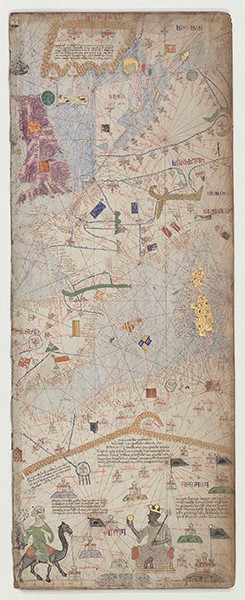
Catalan Atlas Sheet 6
Image from Wikipedia
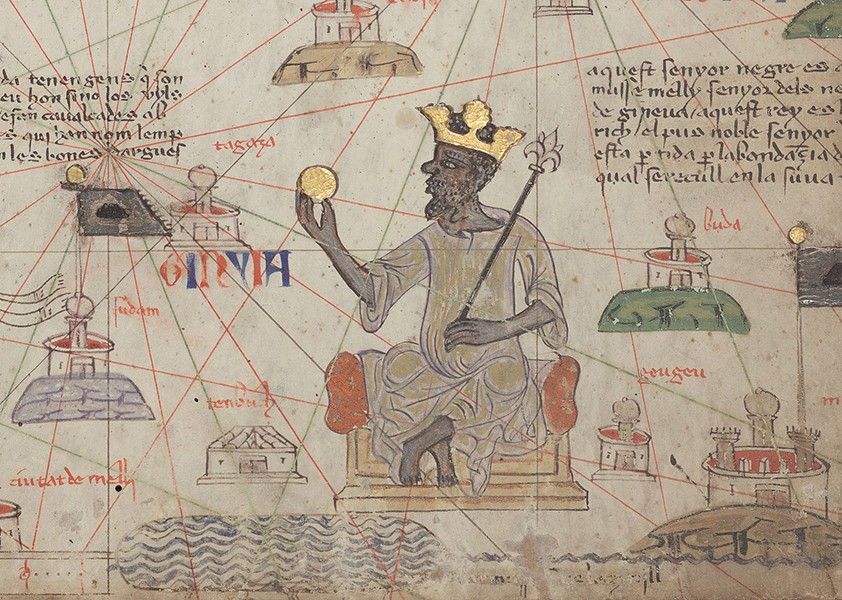
Detail from the Catalan Atlas Sheet 6 showing Mansa Musa
Image from Wikipedia
From 1200 to 1450, the trans-Saharan trade network underwent considerable expansion. Traders, along with their camel caravans, traversed the vast desert landscape, facilitating the exchange of a diverse array of commodities. This trade route established connections between the powerful kingdoms of West Africa and the broader markets of Eurasia.
Slave trade
Trade networks were already established between North Africa and Southern Europe, along with overland connections linking Europe to Western and Central Africa. However, the Atlantic Ocean remained a formidable barrier that kept the peoples and cultures of West and Central Africa distinct from those in Western Europe and the Americas.
It wasn’t until the 1500s that maritime trade began to flourish along the Atlantic coast of Africa, paving the way for more extensive and efficient sea routes. European explorers and traders rapidly broadened their trade and cultural interactions with various Atlantic African communities, ranging from small groups to vast empires. The Atlantic slave trade marked the forced transportation of enslaved Africans to the Americas by slave traders, starting in the 16th century and continuing into the 19th century, often following the infamous triangular trade route, especially the Middle Passage. This system played a crucial role in creating a global economy that depended on the movement and displacement of unfree labour across the ocean.
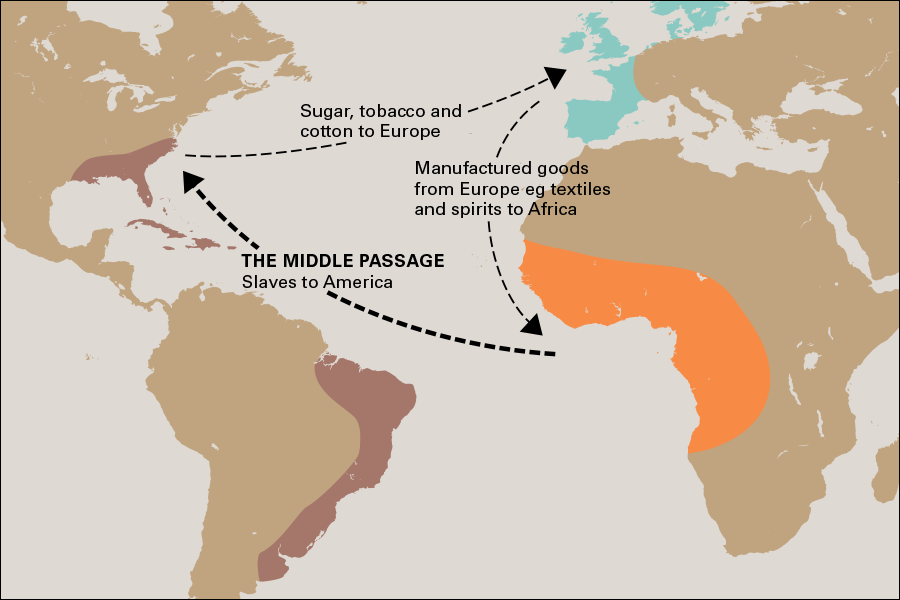
The Middle Passage: Map of the triangular trade
Mobility infrastructure
The evolution of mobility in Africa since the 19th century, particularly in the context of the post-slave trade and post-colonial periods, highlights the technologies, infrastructures, and networks that have facilitated the movement and exchange of people, goods, and ideas among local communities across different regions and through extensive global trade systems. By situating the evolving patterns of mobility in Africa within a broader global framework, it becomes evident that migration is a vital aspect of many Africans’ lives.
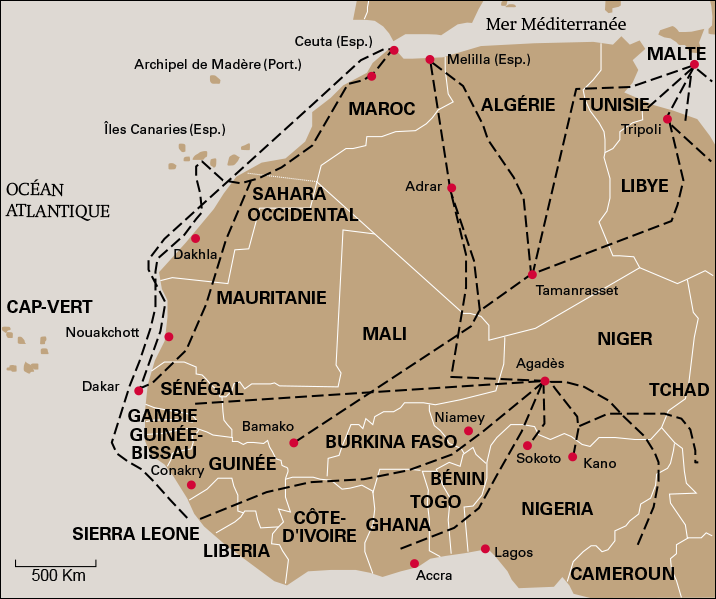
Map of African immigration to Europe, showing the routes in West-Africa.
Frankufurter Allgemeine Zeitung, 2007, Creative Commmons Attribution-Share Alike 3.0
Current trends of African migration to Europe—driven by factors such as human rights abuses, political turmoil, environmental challenges, and conflict—are essential for understanding the varied migration experiences that influence mobilities across the Atlantic region. The movements of the African diaspora in the Atlantic have profoundly impacted social, cultural, and economic practices and dialogues, resulting in the articulation of socio-cultural experiences through both communal and individual stories, visual and performing arts, socio-political activism, and the formation of both individual and collective diasporic identities.
Mobility as capital: The story of Jamaican Rum in Basel
The impact of mobility with commodities can still be felt in cities like Basel, where you might wonder how a product such as Rum connects Basel and Jamaica?
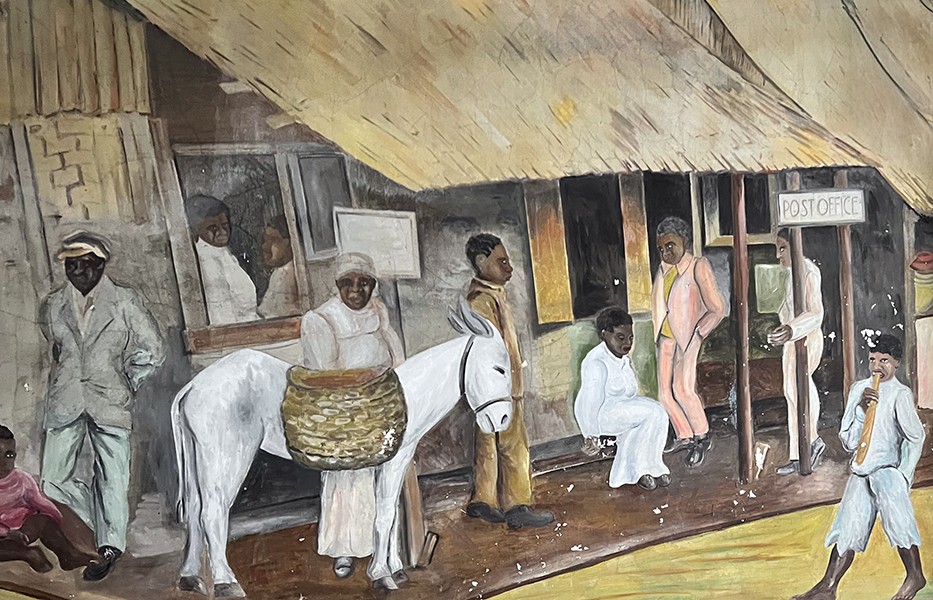
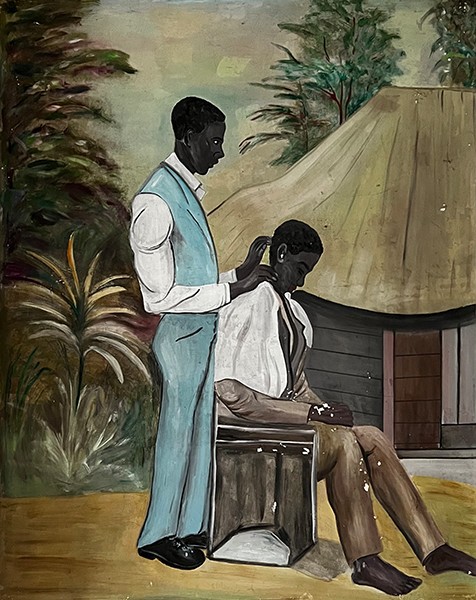
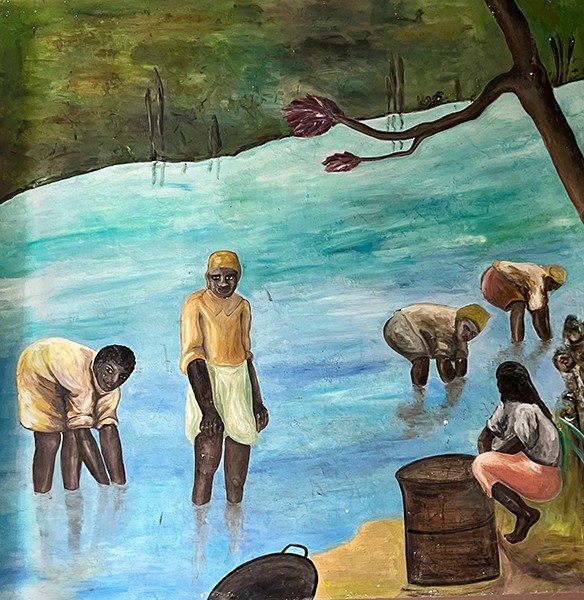
Murals located in the old Rum factory in Basel depicting quotidian life in rural 19th century Jamaica. Photographs: Zainabu Jallo.
In the late 1800s, a traveling merchant from Basel set out on a journey to find global delicacies. His ship docked on shores of Jamaica, where he encountered an extraordinary distillate known as rum. After savoring his first glass, he was convinced that he had to introduce this exceptional rum to Europe. Armed with several samples, he returned home and established the Compagnie Rhumière de Bâle – the Basel Rum Company – in 1889.
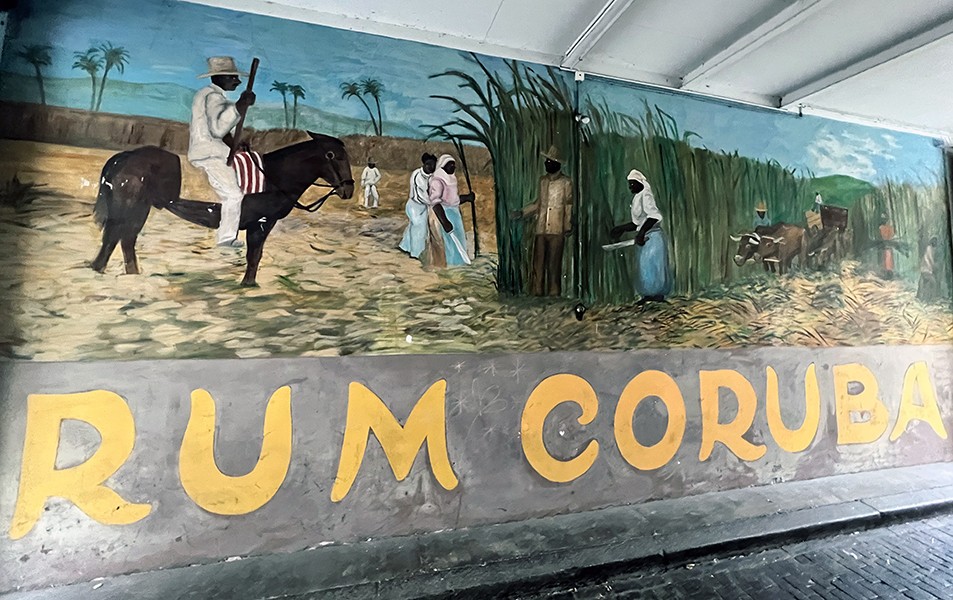
Murals located in the old Rum factory in Basel depicting quotidian life in rural 19th century Jamaica. The large panel illustrates scenes from a sugarcane plantation. Photographs: Zainabu Jallo.
Subsequently, the Rum Company Ltd. was established in 1929 in Kingston, Jamaica. It also served as the Swiss Honorary Consulate and managed the acquisition and storage of goods. This Kingston establishment was the first foreign entity to participate in rum exports from Jamaica.
Today it is still anchored by the transnational slogan “We are proud to say: Distilled and matured in Jamaica. Selected and blended in Basel. Since 1889.”
The photographs above necessitate that we briefly return to the topic of forced migration. After Spanish settlers arrived in 1508 and 1513, approximately 2 million enslaved individuals were transported to Jamaica during the Middle Passage. They were forced to cultivate sugar cane, corn, and various other crops.
English settlers arrived later and initiated an ambitious plan to expand sugar cultivation, relying on enslaved Africans for their workforce. Thousands after thousands of people were forcibly transported to labor on the sugar plantations. The labor-intensive sector fuelled the slave trade, spurred industrial growth, and transformed Jamaica into one of the world’s leading sugar producers.
Slavery was officially abolished in Jamaica and other West Indian colonies in 1834. However, even after several hiccups arising from the abolition of slavery, the sugar production continued to thrive.
On these themes, Anthropology engages with subfields such as African Diaspora Studies, Transnational and Mobility Studies, Area Studies.
Pause for Thought
- How do you experience mobility?
- In what ways does it influence your perception of place?
- How has mobility evolved over the last few decades?
- Do you observe corollaries of African mobility in aspects like commodities, art, lifestyle, fashion, or music around you?
Author: Zainabu Jallo
References
Africanus, L. (2010). The History and Description of Africa: And of the Notable Things Therein Contained. Pory J, trans. Brown R. Ed. Cambridge University Press.
Berzock, K. B. (Ed). (2019). Caravans of Gold, Fragments in Time: Art, Culture, and Exchange across Medieval Saharan Africa. Block Museum of Art, Northwestern University. In Association with Princeton University Press.
Herodotus, and De Sélincourt, A. (1981). The Histories: Herodotus. London: Penguin Books.
Please also visit the Alte Rumfabrik website in Basel (the website is only available in German). The former headquarters of the Coruba Rum Company, it is now a space where freelance stage artists of all genres can experiment and work.
